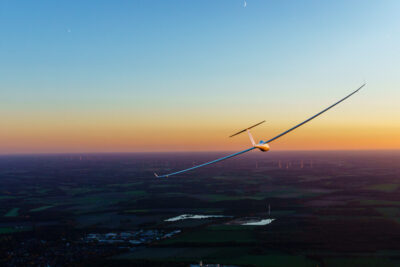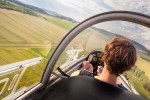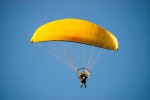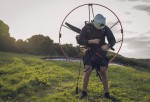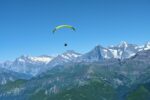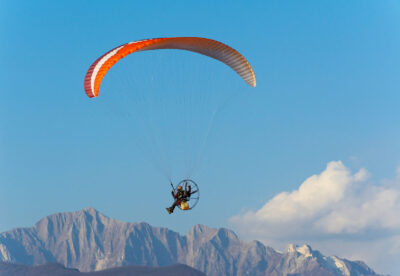Can You Fly a Paramotor Over National Parks? Understanding the Guidelines
19 September 2023 | Updated on January 03, 2024
With the increasing popularity of paramotors as an exciting recreational activity, one of the commonly asked questions is whether enthusiasts can fly over national parks. National parks and wildlife areas are renowned for their scenic beauty, and seeing them from the sky can be a captivating experience. However, regulations and recommendations exist to protect these natural spaces, ensuring minimal disturbance to wildlife and preserving the serenity for ground visitors. This article dives deep into the guidelines and suggestions provided by various sources, ensuring that pilots make informed decisions when planning their flights.
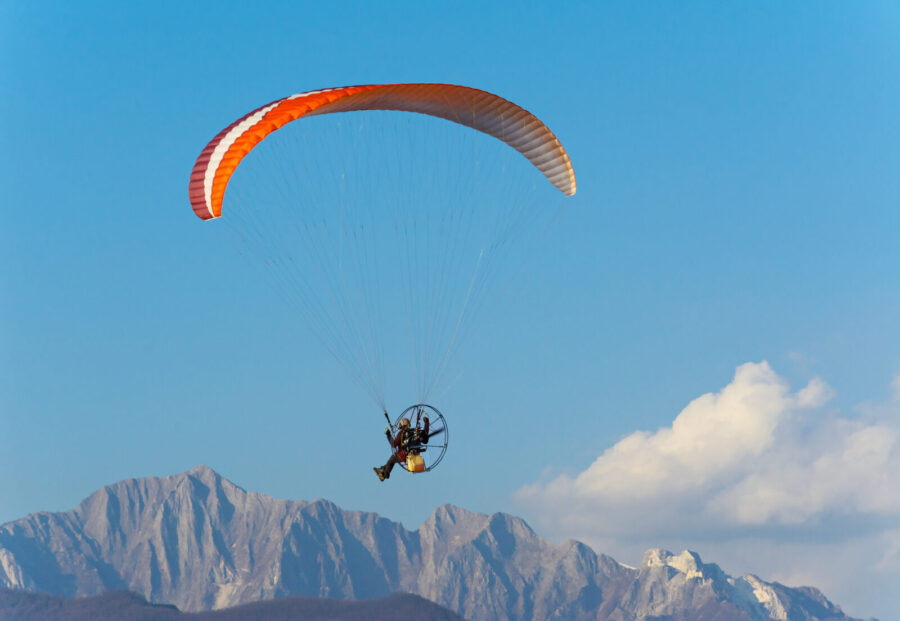
Flying with powered paraglider over Apuan Alps, Italy
Important Disclaimer: The information and data provided here are for informational purposes only, and are subject to change over time. We strive to provide the most current and relevant information, but the dynamic nature of the topics discussed may result in changes that are not immediately reflected in our content. We recommend our readers to conduct their own research and consult with professionals when making significant decisions based on the data or information provided here. Your reliance on the information in this post is solely at your own risk.
Understanding the Basics

The allure of paramotoring is undeniable. It offers the closest experience to the dream of free flight: a motor on your back, a wing above, and the freedom of the skies ahead. Over recent years, the sport has seen a surge in enthusiasts, curious adventurers, and recreational pilots keen on experiencing the world from a new perspective. This growth isn’t just about the thrill of flight, but also the incredible vistas and landscapes that become accessible, offering unparalleled views of earth’s wonders.
National parks, with their pristine natural beauty, diverse terrains, and captivating ecosystems, are naturally on top of the list for many paramotorists. These parks offer a unique blend of undulating terrains, dense forests, meandering rivers, and mesmerizing landscapes that can be even more breathtaking when viewed from above. However, with such beauty comes responsibility. The parks are not just tourist destinations; they’re habitats, ecosystems, and symbols of our planet’s natural heritage. Their serenity and balance can be delicate, easily disturbed by the noise and presence of unfamiliar objects in the sky.
Thus, while the appeal of soaring above these magnificent spaces is compelling, it’s crucial to be aware of the rules, guidelines, and the very essence of why such spaces are protected. Our journey into the regulations and suggestions that pertain to flying over national parks will provide clarity on how best to enjoy paramotoring while ensuring these national treasures remain undisturbed for future generations.
Regulations and the 2,000 ft Rule: Decoding the Guidelines for National Parks
Navigating the regulations surrounding flights over national parks can be a bit intricate. The FAA, as the chief governing body for all things airborne in the U.S., has set forth advisories and guidelines aimed at preserving the sanctity of these natural zones. One of the most talked-about directives is the recommendation to maintain a minimum altitude of 2,000 feet above ground level (AGL) while flying over areas like National Parks, Monuments, Seashores, and Lakeshores. It’s important to note, however, that this recommendation is often misinterpreted.
The key distinction here lies between what’s “requested” and what’s “required.” The FAA’s 2,000 feet AGL rule, as stipulated in Advisory Circular AC 91-36, is a request – not a hard-fast requirement. The primary objective behind this guideline is to mitigate potential noise complaints, ensuring that the tranquility of these areas remains largely undisturbed. Thus, while pilots are encouraged to observe this altitude suggestion, they’re not legally bound to do so.

That said, the implications of deviating from this advisory can vary. Given that these natural parks serve as habitats to diverse wildlife, flying at lower altitudes might disturb animals in their natural environment. Furthermore, though the guidelines might seem voluntary, other potential legal ramifications, like wildlife disturbance laws, could come into play, making it crucial for pilots to exercise caution and discretion.
Another aspect to consider is the feedback and perception of ground visitors. National parks are frequented by nature enthusiasts, hikers, campers, and families looking for a serene environment. Low-flying paramotors, though exhilarating for the pilot, might not always align with what these visitors anticipate during their visit.
In conclusion, while the freedom to soar the skies is undeniably enticing, understanding and respecting the underlying guidelines ensures a harmonious coexistence between the thrill of paramotoring and the peace of national parks. It’s all about striking a balance – enjoying the sport responsibly while ensuring minimal impact on these treasured landscapes.
Links and Resources:
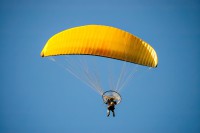
Learn more
Where Can You Legally Fly a Paramotor?
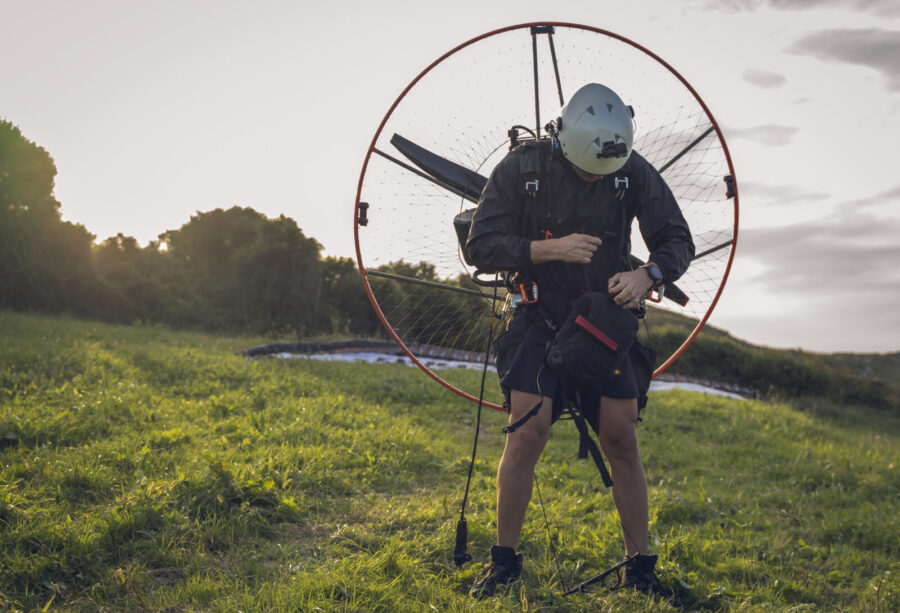
The Importance of Being Responsible
The world of paramotoring offers an exhilarating blend of freedom, adventure, and unparalleled beauty. However, with such privileges come significant responsibilities, especially when venturing over areas that are symbols of our planet’s natural legacy, such as national parks. These parks, with their delicate ecosystems and diverse habitats, require a careful and thoughtful approach from all visitors, including those from the skies.
History offers us lessons on the significance of mindful flying. Take, for instance, the Grand Canyon’s overflight history. Once an unregulated aerial zone, frequent and low-altitude overflights led to both environmental and experiential concerns, resulting in stricter regulations over time. These restrictions weren’t just borne out of environmental concerns but were also about ensuring the thousands of ground visitors could enjoy the park’s serenity undisturbed.
One of the most proactive steps a pilot can take is to contact local park authorities before planning any overflight. These authorities possess the most up-to-date information on current regulations, sensitive zones within the park, and any special events or circumstances that pilots should be aware of. While overarching federal advisories offer a general guideline, specific parks might have local rules influenced by distinct ecological, cultural, or preservation considerations.
Moreover, reaching out to park authorities isn’t just about adhering to rules; it’s an act of respect. It signals to the authorities and the broader community that pilots are keen on being responsible stewards of the sky, ensuring their activities align with the preservation goals of these natural wonders.
In essence, paramotoring is as much about the joy of flight as it is about understanding and respecting the world below. By embracing responsibility, seeking guidance, and practicing thoughtful flying, pilots ensure that they contribute positively to the tapestry of experiences national parks offer to all visitors.

